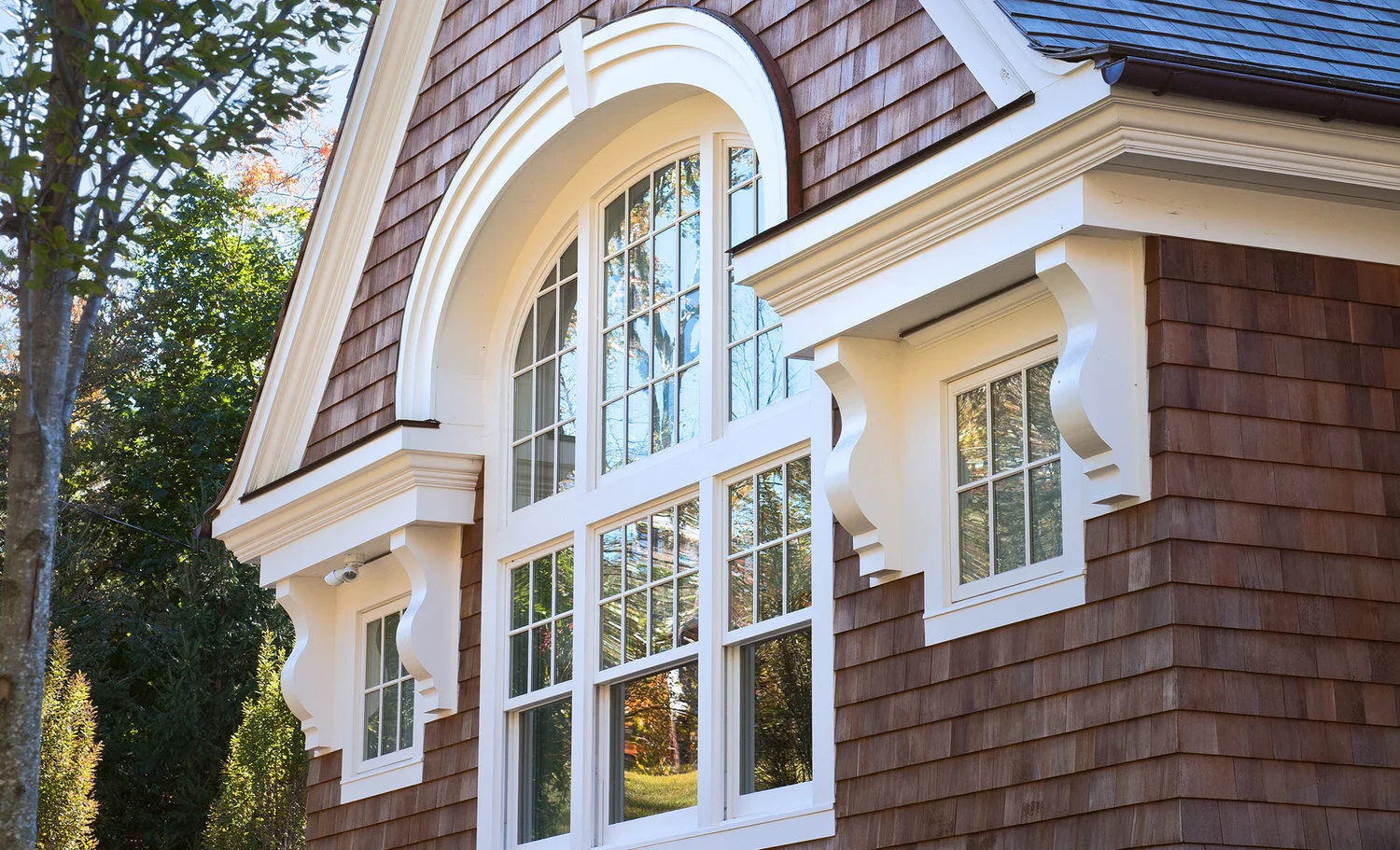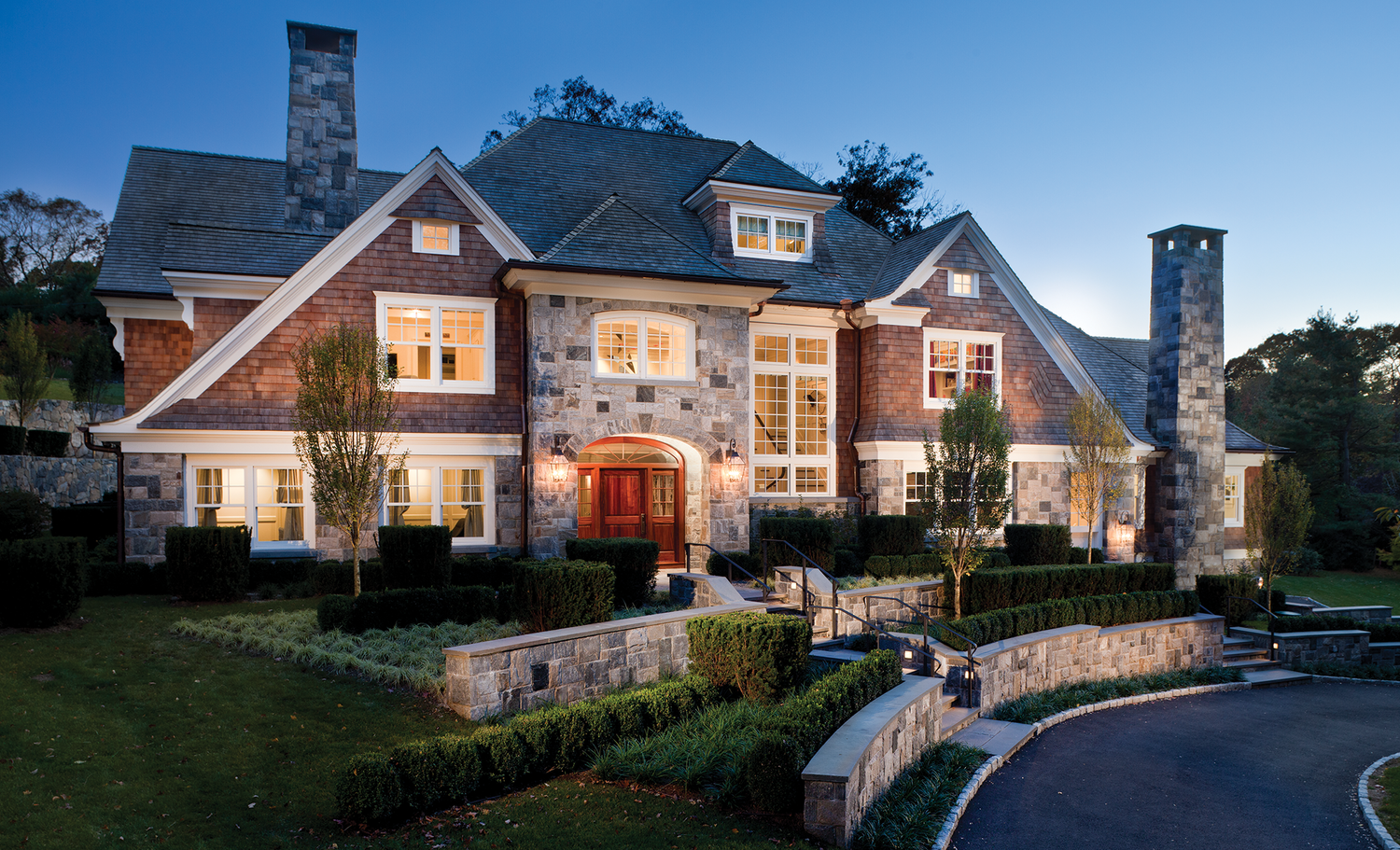Natural Stone As A Green Building Material
Our Coastal English Manor Style exterior was designed incorporating a combination of shingle and stone siding.
From the simplest bathroom to the large, modern kitchen, every piece of a finished project obviously needs to be made of something. In an eco-conscious world, choosing a building material that is environmentally friendly and visually appealing can prove complicated.
However, there’s a simple answer: natural stone.
Most of us recognize that stone is a striking building material. But did you know it’s also green? We’re not talking about color here. Natural stone is a sustainable material that is increasingly used in green buildings. To learn more about the benefits of stone as a green building material, keep reading.
What Is Green Building?
Simply put, green building aims to be as sustainable and eco-friendly as possible throughout the entire process. The goal of green building is to reduce unnecessary waste and promote sustainable materials and methods. This sustainability in construction happens in several ways.
One of the most critical concepts of green construction is efficiency. Using less water, electricity, and other resources to prepare materials and complete a job is better for the environment (not to mention the wallet). With sustainable architecture and building practices, the entire life cycle of the build is put under consideration. The raw materials need to be ethically sourced. The finished product needs to last for decades, or, even better, centuries. And, when the installation reaches the end of its life, all materials procured should be reusable or recyclable. If you’re looking for more information on the nature of stone or stone finishes, we recommend you visit Materials Marketing.
This new 10,000 square foot mid-country "Traditional Shingle Style Residence" is located on a one-acre site in Greenwich, Connecticut. The current owners had a strong affection for their property, located on a private road, and decided that they would raze their 4,000 square foot garrison colonial house to build the home of their dreams. The first was to define a first floor elevation that allowed access to an established rear terrace while creating an elegant terraced entry procession from the existing driveway elevation to the arched stone-front entry.
The Sustainability Of Natural Stone
Whether it be beautiful white marble, versatile travertine, or tight-grain limestone, all stone is natural. There is no factory that assembles Nero marble, nor is there an artificial chemical process that creates stone. Natural stone as a building material is about as green as it gets.
While there is technically a finite amount of natural stone in the world, there is hardly any concern for “running out” of materials, as stores of these stones are immense. What’s more, as we’ll discuss later on, natural stone can be reused in many ways, making it all but limitless as a building material.
The Quarry Process
The sustainability of natural stone starts at the source: the quarries where rock is first extracted. While quarrying practices in the distant past weren’t always mindful of environmental concerns, that natural stone industry has changed in the past 15-20 years. These days, stone quarries in the US are rigorously overseen by the Mine Safety and Health Administration (MSHA) and other organizations.
Other nations have similarly strict guidelines when it comes to environmental concerns.
In addition to their green operating practices, most stone quarries are repurposed when the work is finished. Old quarries have been turned into parks, recreation areas, and more.
Durability
Once stone has been extracted and prepared for home installation, sustainability continues. If you’ve ever wondered why many old castles are still standing, you can thank stone for that.
Because of its natural strength and hardness, stone is incredibly durable, even with daily use. A stone floor can withstand generations of foot traffic; marble countertops will outlive most buildings in which they’re installed.
Because natural stone stands the test of time, you won’t need to replace it, which keeps resource use at a minimum. There’s a reason the phrase “Reduce, Reuse, Recycle” comes in that order—reducing is the greenest practice you can follow! Building with natural stone is a terrific way to exercise this phenomenon.
Recycling
When the time finally comes to replace a stone floor or counter, environmentalists can rejoice. That’s because natural stone is almost entirely recyclable. Larger pieces are often reused in other home projects. Small or damaged stone is repurposed for use in the construction of roads. The recycling of natural stone consumes even fewer resources than the sourcing of new stone, so this green practice is standard.
If you’re ready to build your dream home contact Steven Mueller Architects, LLC today. Steven Mueller Architects, LLC specializes in designing high-quality residences in a variety of styles.
For more information about our services contact us.
We share a commitment to green building. If you would like to learn more about sustainable stone, contact Materials Marketing.
Sources:
Natural Stone Institute. Sustainable Natural Stone. https://www.naturalstoneinstitute.org/consumers/sustainable-natural-stone/








